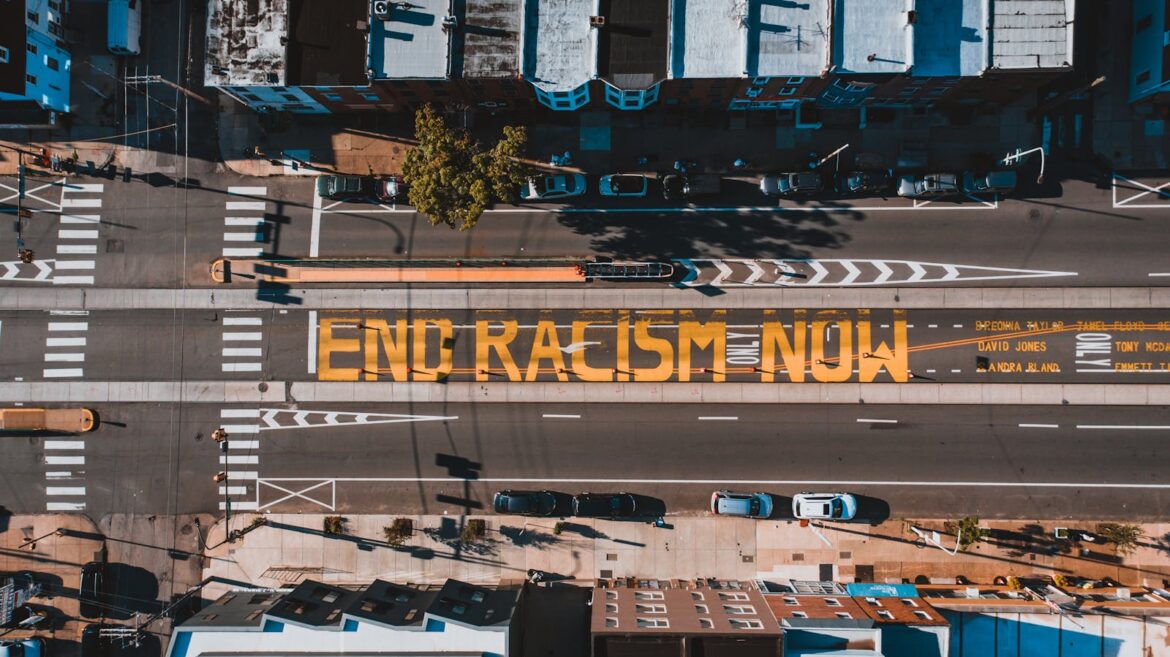One of the most discussed items in the media is systemic racism, and how it affects people of color. Including Hispanics, like me.
I have had the opportunity to travel to several countries around the world, including North and South America, Europe, the Middle East, the Arab Emirates, and India.
I will begin with my personal experiences related to systemic racism in these countries, as a Hispanic. Then I will discuss systemic racism in different institutions.
Personal experience with Systemic Racism in Europe.
I have never experienced systemic racism whenever I traveled to Canada, the USA, or the different countries I visited in Europe. These countries traditionally have white populations.
I studied for one fall semester in the UK. Most of my classmates were white girls. They all were so pretty, well-dressed, and looked like Barbies. They were also very nice to me.
I have to admit that when I saw my classmates for the very first time, I thought that they wouldn’t like me because I wasn’t white like them. I had this preconceived idea that I would be discriminated against because I was from Mexico and looked Hispanic.
Soon, I realized that this was not true. But where did this idea come from? That’s when I noticed that the media had influenced me in a way that led to these preconceived notions. The reality is that white people are not racist just because they are white.
Years later, I had the opportunity to study another fall in Spain. This time I didn’t even think about it. It wasn’t a problem at all.
I also traveled to other European countries, such as France, The Netherlands, the Czech Republic, Switzerland, Liechtenstein, Belgium, Italy, and Greece.
In none of these countries, did I experience systemic racism. Not in the places where I studied, public transportation, or government institutions (if I visited any).
The only complaint I have is that while traveling from one European country to another, an airline employee asked me if I had a visa before boarding my plane. It was kind of frustrating because Mexicans don’t need a visa to travel around most European countries.
Assuming that because I am Mexican I needed a visa without research first was kind of upsetting. This incident is related to my nationality not to my race, so again I wasn’t a victim of systemic racism.
Personal experience with systemic racism in the USA
Some years later, I moved to the USA in 2019. I live in a red state in a white conservative area, filled with Trump supporters.
The black and Hispanic population is minimal where I live. My neighborhood, people at church, coworkers, my friends, and my husband’s family are majorly white.
In the 5 years that I have been living in the USA, no one within those circles has been racist to me or rejected me because I am Hispanic, or an immigrant.
In my first job here in the USA, I earned more money in a part-time job than my white husband who has lived here his entire life and worked a full-time job. This was because of my career, experience, qualifications, and type of job.
My experience has been all the contrary, very positive and I couldn’t be more pleased. So based on this experience, I would say there is no systemic racism. At least in the area where I live.
Interactions with racist people in the USA
The fact that I hadn’t experienced systemic racism, doesn’t mean that there are no individual racist persons.
There are two experiences where I encountered racist individuals. It was at work but it was not from coworkers or superiors. It was from clients.
Both of them were white, middle-aged people, more likely on the left of the political spectrum. In their defense, they were very nice and well-intentioned people, and I don’t believe that they realized how their comments were racist in nature.
In the first case, the male I was trying to help was watching a video about Trump at the end of the Trump administration. He very angrily said: “I want him to leave as soon as possible” referring to Trump and implying that I would agree with him.
I wanted to leave politics outside of my job and, I don’t like to lie, so I tried to answer in the most neutral but true way possible. “He is not going to go anywhere until he dies”, I answered. This is something that I consider to be true and something that I thought would satisfy him.
Now, why this interaction was racist?
I am Hispanic, and I look as such. He was assuming my politics just because of the way that I look, and that is racist. Believing that I should vote, support, or think in a certain way because of how I look, as I said is racist. But again I, don’t think he was even aware that this belief is racist. I think he was being nice.
The second interaction I had was with a woman at work. Again, she was very nice but didn’t realize she was being racist. When I came into the room and greeted her, she mentioned:
“This administration (Biden) is allowing ‘your people’ to get into the country because the previous one didn’t.” She said this in a positive and happy tone, again assuming I would agree with her.
My response was: “Oh! I would never enter this or any other country illegally.”
“How did you get in here, then?” she asked.
“Legally, as everybody should,” I answered.
Why was this interaction racist?
- She assumed that I was okay with illegal immigration, which I have never been.
- She made assumptions about my politics based solely on my appearance, similar to the previous case.
- She assumed that Hispanics in the U.S. are here illegally and that there is no legal way for us to enter the country.
- She assumed that an illegal immigrant would speak English, (because I am fluent) even though many do not prioritize learning the language.
- She assumed that an Illegal immigrant would be able to secure a well-paid job, like the one I held, which requires specific credentials and specialization. Most undocumented immigrants who didn’t grow up in this country are uneducated and may not have even finished high school. While there are exceptions and success stories, these are not the norm.
- Most importantly, she assumed that I entered this country illegally just because of the way I looked. This was the most racist and insulting aspect of her comments. Many of us worked very hard to come to this country legally.
It’s worth noting that this woman was very nice and did not mean harm; she simply didn’t realize how racist her comments were.
I’ve come to realize that this is often how the left operates. They may have good intentions, but they sometimes fail to think things through.
Real Systemic Racism in the USA
The fact that I haven’t experienced systemic racism personally, or that I’ve only had a few isolated interactions with racist individuals, doesn’t mean that systemic racism doesn’t exist in the U.S.
You can find it in universities and colleges, large corporations, institutions, and, of course, in the government. There are several policies in place that adversely affect many people.
One such policy applies specifically to colleges and universities, and it’s called “affirmative action.”
Affirmative action according to Wikipedia is:
Refers to a set of policies and practices within a government or organization seeking to benefit marginalized groups. Historically and internationally, support for affirmative action has been justified by the idea that it may help with bridging inequalities in employment and pay, increasing access to education, and promoting diversity, social equity and redressing alleged wrongs, harms, or hindrances, also called substantive equality.
In practice, Universities have a significantly higher percentage of Black students due to these policies, reaching up to 36%. This is well above the 15% representation of Black individuals in the general population.
I am sure that many smart and capable Black and Hispanic individuals gain admission to college based on their merits. However, some are admitted primarily because of the color of their skin rather than their academic achievements or abilities.
This practice has a significant impact on other groups, particularly the Asian population. Asian students are often very intelligent and strong performers who deserve a place at universities. Yet, due to affirmative action policies, they often have to score higher than others to secure admission.
This situation is fundamentally unfair and doesn’t reflect their backgrounds or capabilities. Black and Hispanic individuals are just as capable as anyone else and should not be viewed as victims.
This can be seen as a form of “Black privilege.” Meanwhile, I haven’t witnessed “white privilege” in the same way; in many cases, white and Asian students have to work harder and face discrimination due to their race.
The other policies you often see in corporations are referred to as DEI, which stands for Diversity, Equity, and Inclusion. Some companies are choosing to hire based on these principles, aiming to increase their representation of minorities based on skin color, gender, and sexual orientation.
Under this framework, a candidate’s achievements, qualifications, or character may not play a significant role in hiring decisions. The practice of prioritizing candidates based on skin color is inherently racist.
As a result, white individuals, men, and straight people can be overlooked, and the best candidate for a job may not always be the one who gets hired. This is particularly concerning in fields that involve public safety, such as pilots and doctors, or in positions of high responsibility, like lawyers.
Personally, I want the most qualified individuals in critical roles—my doctor, my pilot, or my lawyer—rather than someone chosen solely based on DEI criteria.
A real example of a DEI hire is Vice President Kamala Harris. There’s no denying this. When asked about her significant accomplishments, many people respond, “She is the first Black female Vice President.” How is that an achievement in terms of qualifications?
When I say there’s no question about her being a DEI hire, it is because when she ran for president, she received fewer votes than any other candidate in the primaries. and didn’t even make it to the ballot. As Vice President, her popularity has been very low—lower even than Joe Biden, who is widely regarded as one of the least popular Presidents in history.
Joe Biden is an older white straight male, and he sought to appeal to a different demographic. As a result, he needed a diversity hire and chose a woman of color. However, it’s important to note that Kamala Harris is not Black, she comes from a wealthy Indian family.
Another example of both Affirmative Action and DEI is Claudine Gay, the former president of Harvard University. She was the first black president and the second woman to hold the position in Harvard’s history. Her presidency was the shortest ever, lasting only six months.
She resigned amid a scandal involving allegations of plagiarism and antisemitism. Additionally, many believe she was unfit for the role.
Real examples of systemic racism
One of the most notable examples of racism recently involves basketball player Caitlin Clark. She is so talented that she has significantly boosted viewership for WNBA games like no other player.
However, she faces bullying because she is white and straight. While the Black community often speaks out against racism in this country, in this case, they are exhibiting racist behavior toward this white girl.
Disney was embroiled in a scandal this year after a tape involving its Senior Vice President, Michael Giordano, was leaked. In the tape, he was caught saying that the company clearly refuses to hire white people, particularly white males.
This discriminatory practice was revealed by O’Keefe Media Group. You can watch the full story in their video.
Another notable case of racism against a white person occurred recently at Starbucks. where a manager was fired solely because she is white.
Long history short, two Black men attempted to use the restroom at a Starbucks in Philadelphia. They were informed that it was for customers only and were asked to make a purchase. When they refused to leave or buy anything, the police were called, and the men were arrested. The manager of the store, who was also Black, was the one who called the police.
Outrage erupted on social media after a video of the incident was released. In response, Starbucks decided to fire a white manager who had no involvement in the situation, seemingly to demonstrate that they were taking action. However, it appears that no consequences were faced by the Black store manager, likely due to his race.
Conclusion
Systemic racism is very real in the USA, and the primary victims are often White individuals, both men and women, with a greater impact on straight, Christian, and conservative men.
Racism is unacceptable, regardless of whether it involves Black, mixed, Native American, or Caucasian individuals. As a society, we should strive to avoid discrimination based on skin color and instead treat people based on their character.
In schools and workplaces, we should select the best candidates based on their merits, not on their skin color or demographics.




